Once upon a time – many, many centuries ago – there was a land known as Hills of Paradise. It was perched high in the mountaintops of what is modern-day Xieng Khuang province of Laos. Towering pine trees dominated the rolling hills, rivers and waterfalls irrigated and nourished the bountiful land, flowers bloomed year round in a temperate climate, and jagged limestone sheltered the inhabitants from the worst of weather storms.
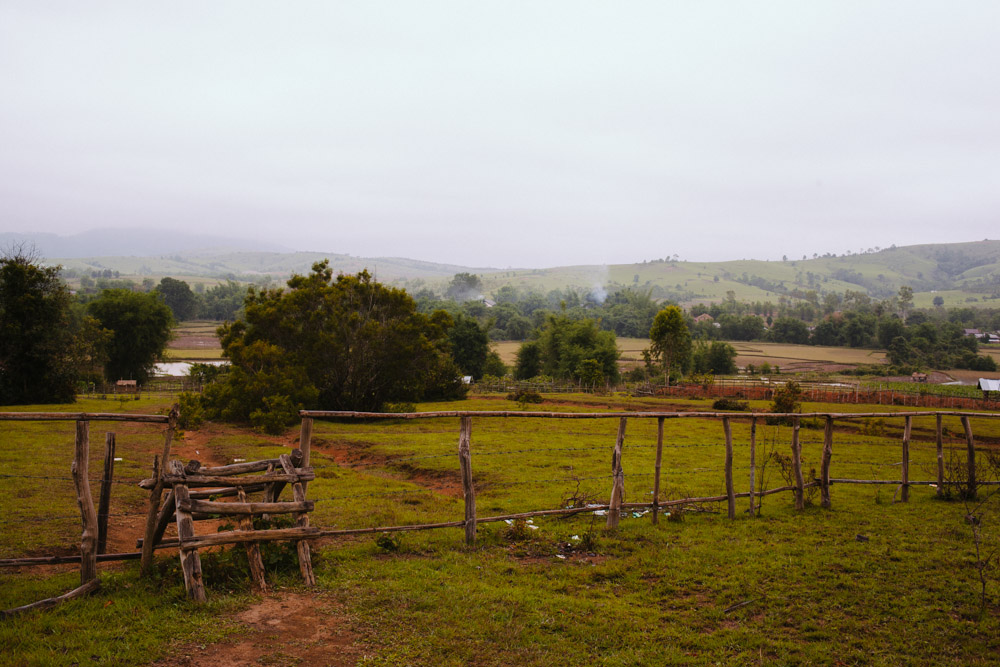 The rolling hills of paradise, near present-day Phonsovan, Laos.
The rolling hills of paradise, near present-day Phonsovan, Laos.
And what habitants they were. Rising up many feet into the open sky, these mythical creatures were strong, resilient, and… full of kindness and peace. They tilled the hills of paradise for rice, gathered the many fruits growing in its valleys, and caught fish from streams and rivers that feed into the mighty Mekong River. The gentle giants were particularly skilled in stonework, firing great big stone barrels to ferment rice whiskey, which was liberally consumed at every celebration. The villagers lived in peace and harmony with nature and each other.
But one fine day, many thousands of years ago, a great misfortune descended on the hills of paradise with the ascendance to the throne of Chao Angka. The young, arrogant King was only interested in personal pleasures and despotic governance. Chao Angka was brutal to his subjects, levying a heavy yoke on every family: conscripting all young and healthy giants into the army and stripping the families of most of their rice and entirely of fruits and fish that previously overflowed the communal tables of the hills of paradise. Chao Angka traded away the natural cornucopia of the hills of paradise for personal enrichment. He spent lavishly on himself and his security apparatus of mercenaries who were charged with crushing any whiff of discontent or dissent against the terrible reign.
The local subjects lived in fear and misery until one day they gathered enough courage to appeal to Chao Angka to stop his persecution and halt the oppression – but to no avail. The King mercilessly meted out terrible punishments to the brave few who dared to come forward. Driven by desperation, a few others managed to flee the kingdom and escape the reign of terror only to be captured and brought before the great King Khun Jeuam of the lands of the north. Trembling, the gentle giants relied the stories of terror and pleaded for mercy and for the deposition of their King Chao Angka.
Horrified by the stories of brutality and oppression, Khun Jeuam took up his spear, marshaled an army, and marched south for the Hills of Paradise to take on tyrant Chao Angka. Furious over treason and invasion Chao Angka’s men fought viciously. After a long and arduous struggle between the armies of two great Kings, the great and good king Khun Jeuam emerged victorious as lifeless Chao Angka fell to the ground. A victory chant rose through the mountains as the gentle giants of the Hills of Paradise were liberated.
Elated, the local residents prepared a massive celebratory feast for King Khun Jeuam and his army like none every seen before. Wasting no time, the locals fired thousands upon thousands of stone jars, hastily fermenting gallons of rice whiskey for the feast. The largest vessel was presented to King Khun Jeuam as a victory cup.
So mighty was the celebration – and so massive the hangover – that nobody managed much of a clean up effort. Some 1,500 years later, the aftermath of gargantuan feast is still spread over an area of nearly 6,000 kilometers. Today, it is known as Plain of Jars.
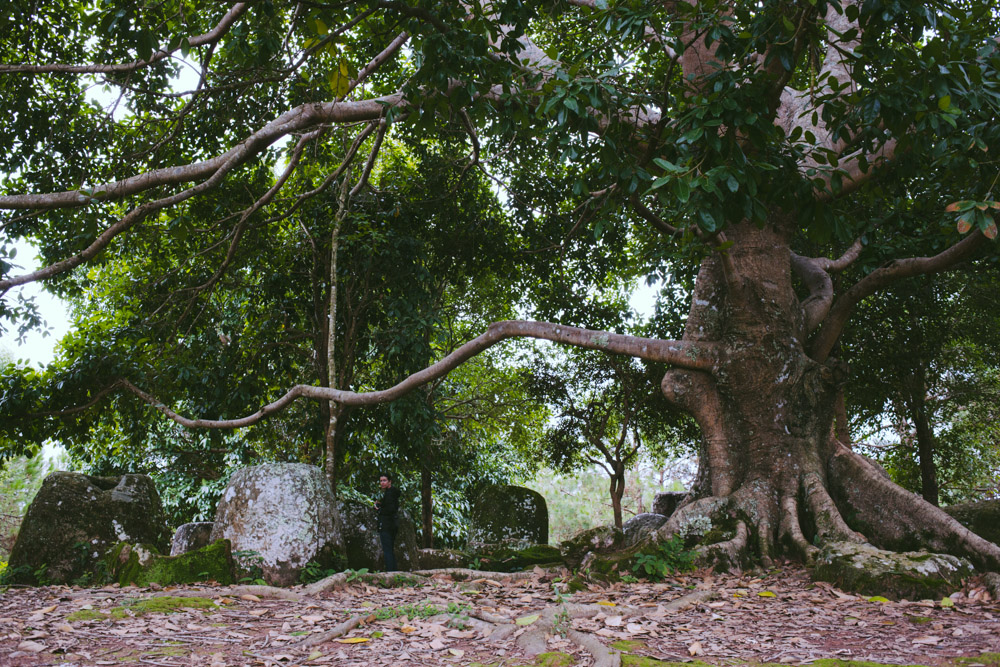 Plain of Jars, Phonsavan, Laos.
Plain of Jars, Phonsavan, Laos.
* Great legend, eh? Beyond ascertaining that the gigantic stone vessels are at least over a thousand years old, no one actually knows the exact origin of the mysterious jars. There are plenty of much more plausible suggestions that have absolutely nothing to do with giants. You can google if you like. But until someone tells me undeniably that these vessels were NOT used for whiskey toasts by the good King Khun Jeuam and his men rolling madly around the hills in celebration of their victory, I am sticking with the legend.
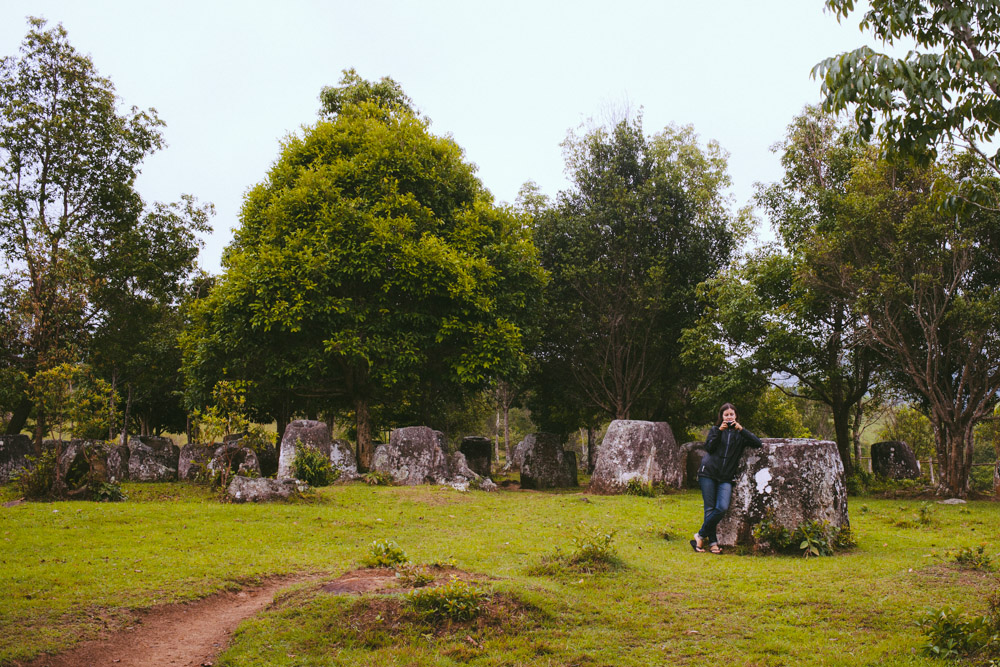
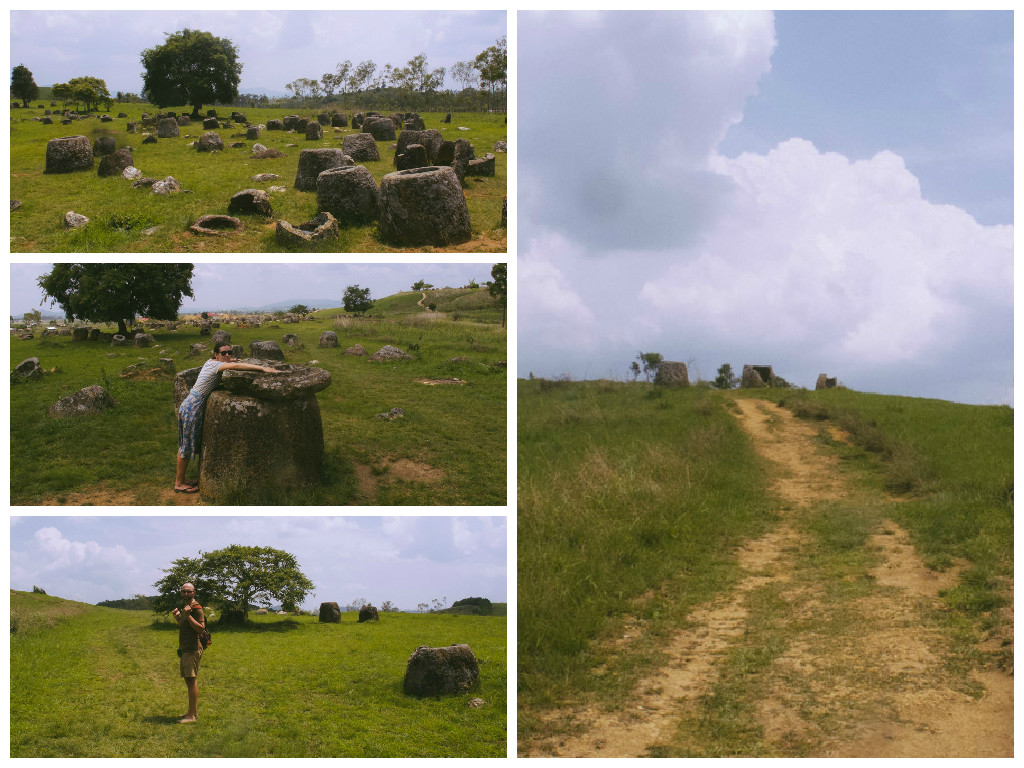
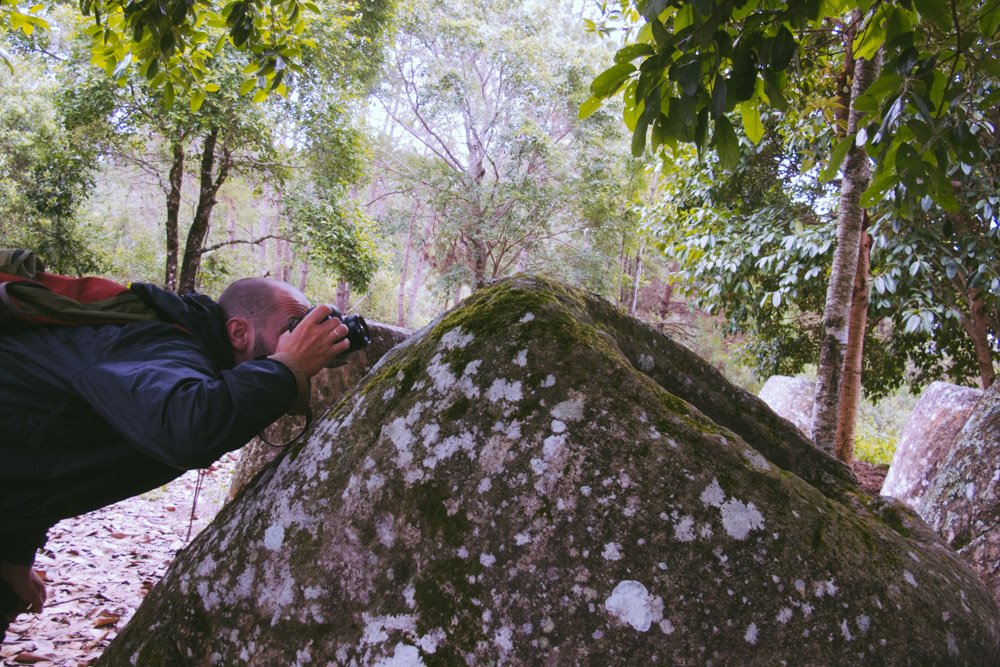 Plain of Jars, Phonsavan, Laos.
Plain of Jars, Phonsavan, Laos.
Getting to the plain of jars:
The town of Phonsovan is the base for exploring the 3 Plain of Jars cleared for tourist visits. It’s possible to explore either by scooter or with a pre-arranged group tour from one of the guesthouses or travel shops. We already had our motorcycle, but it’s very easy to rent motorbikes in town.
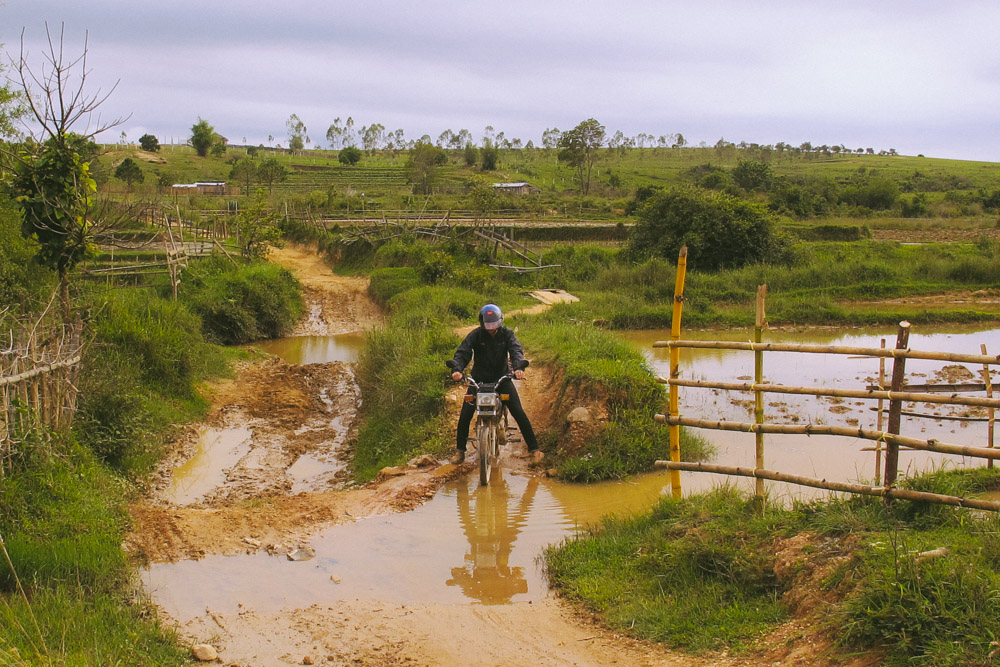 Bucolic countryside roads leading to a Plain of Jars site, outside Phonsavan, Laos.
Bucolic countryside roads leading to a Plain of Jars site, outside Phonsavan, Laos.
We purchased a booklet about the area that includes a map of Jar Sites put together by students form the Lone Buffalo Foundation. The booklet is available at Bamboozle restaurant in the center of town. Otherwise you can easily manage on your own if you follow signs out of town.
Staying Safe at the plain of jars:
Northeast Laos is plagued by unexploded bomb ordinance – a legacy of the Vietnam war. However, the town, surrounding villages and marked roads and hiking paths have been cleared and marked by MAG as safe for walking. All three Plain of Jars sites have clearly marked paths, as long as you stick to those you should be totally fine.
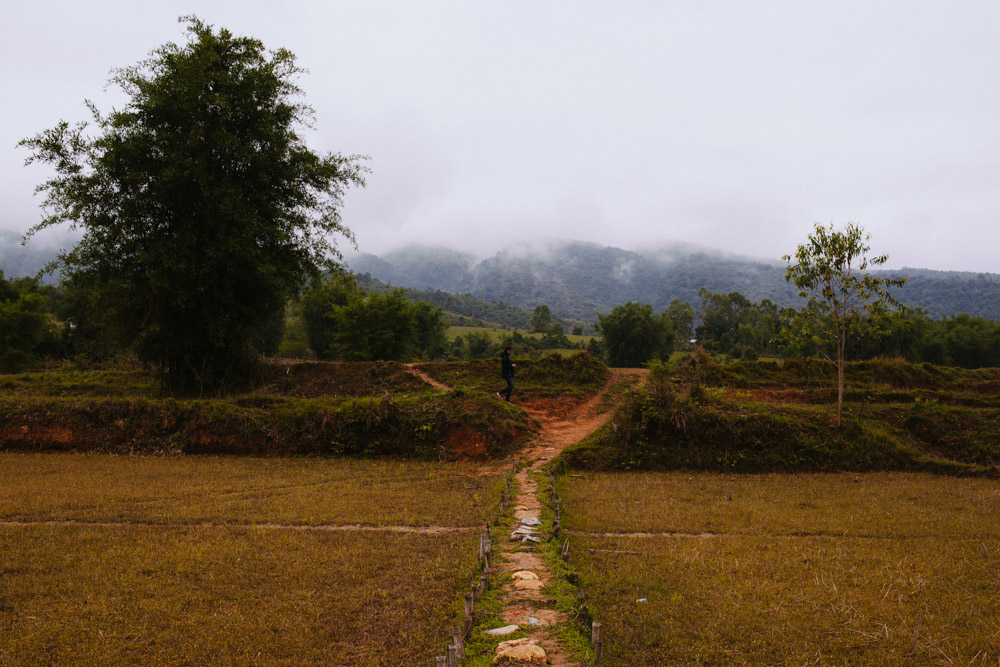 MAG markers are fairly easy to spot and follow on the Plain of Jars territory. Laos.
MAG markers are fairly easy to spot and follow on the Plain of Jars territory. Laos.

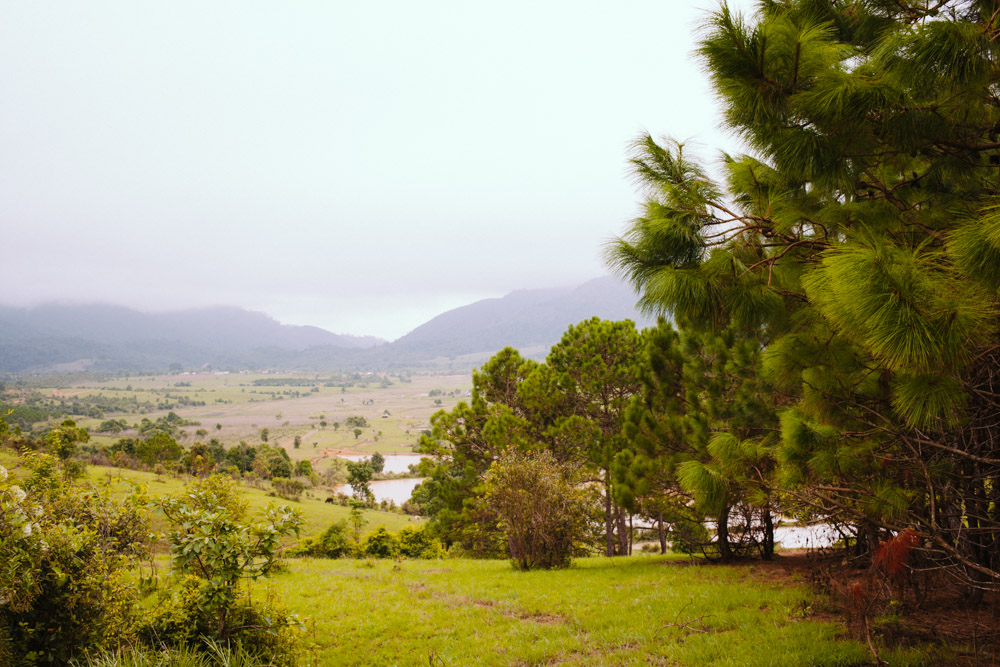
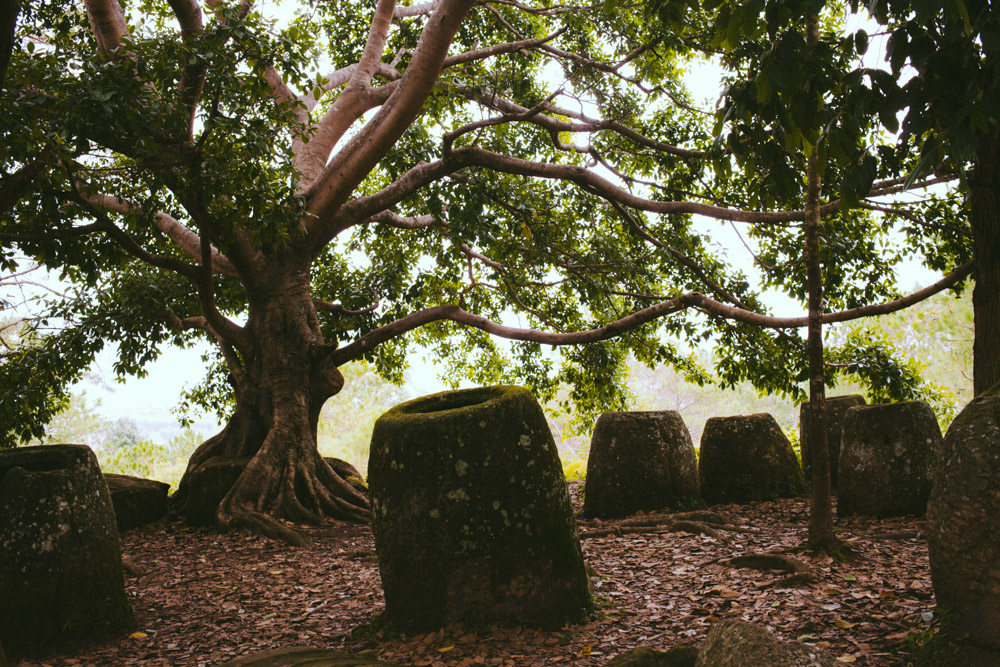
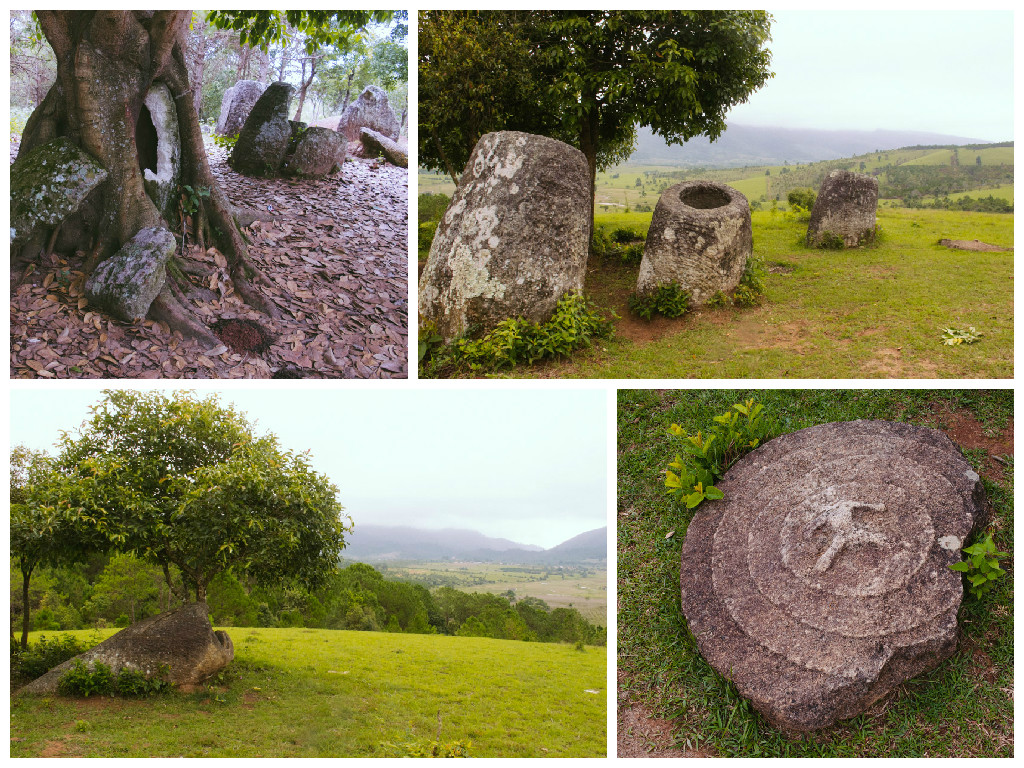
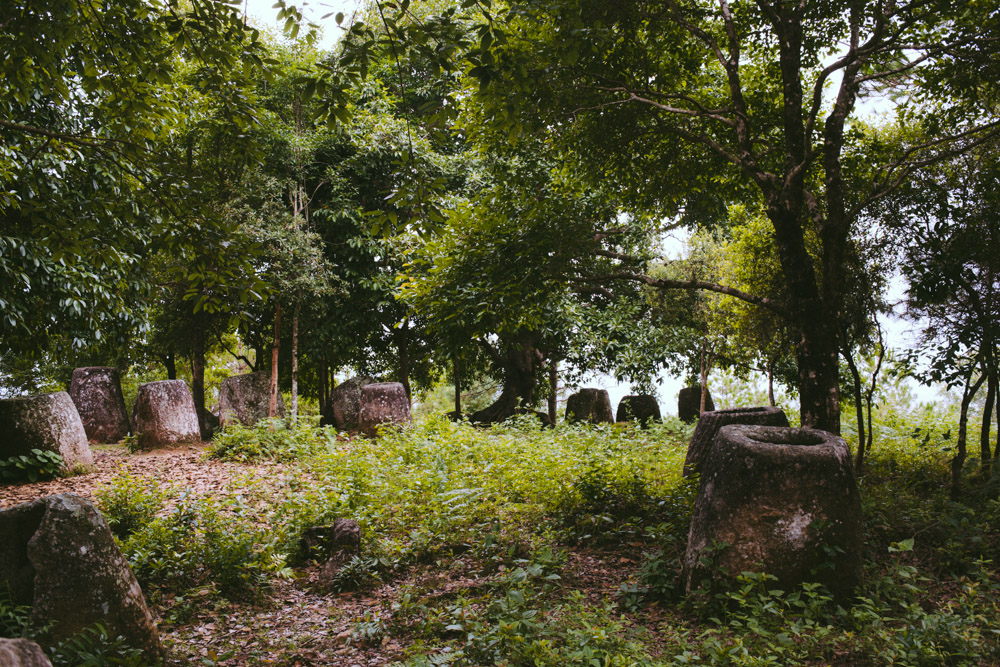
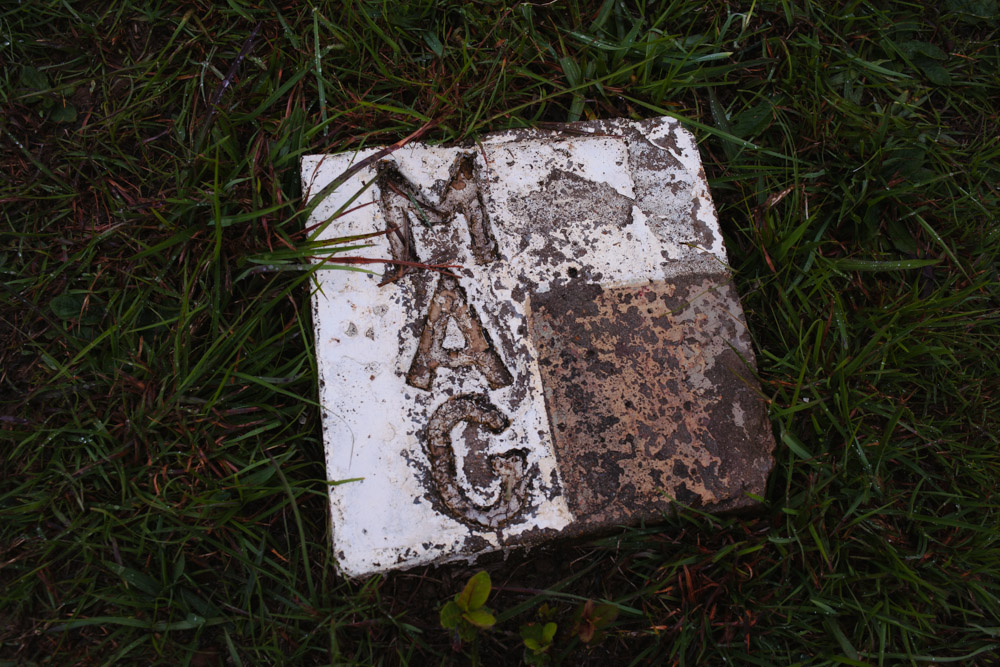
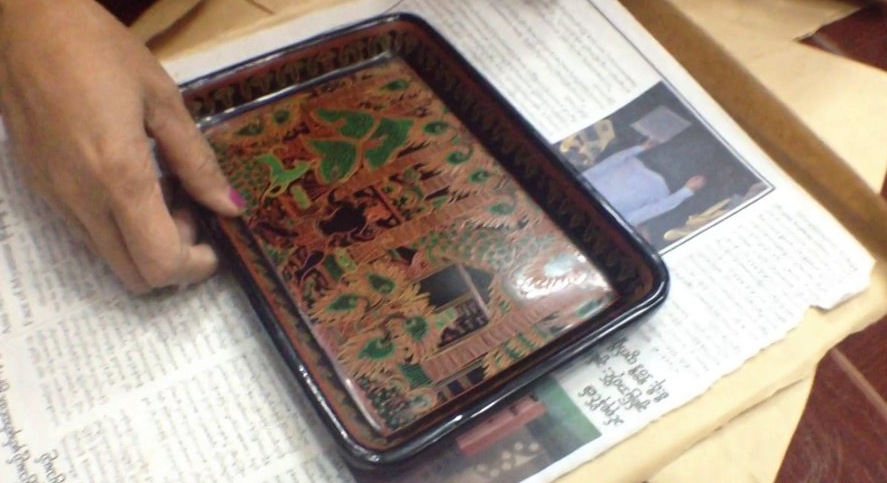
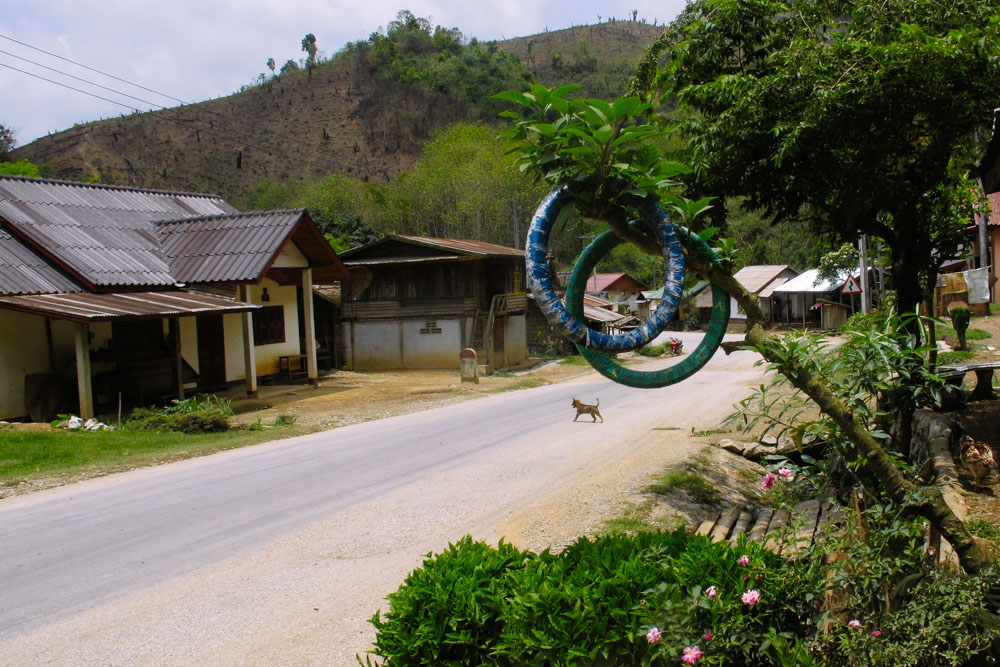

 #housetolaos
#housetolaos
















 #
#




